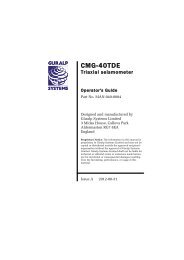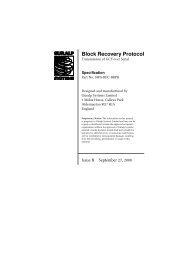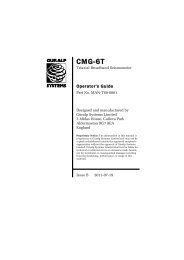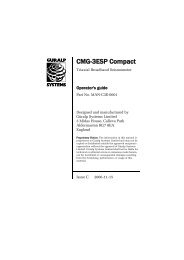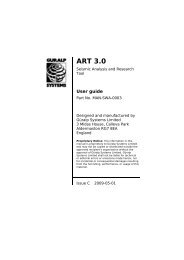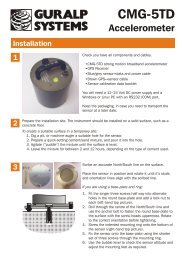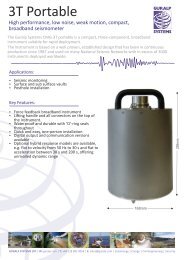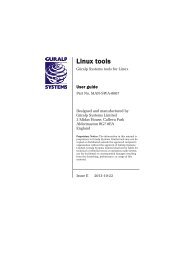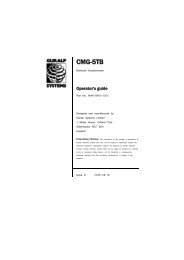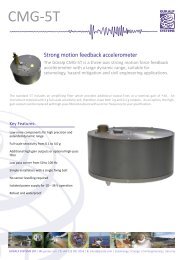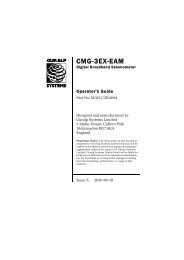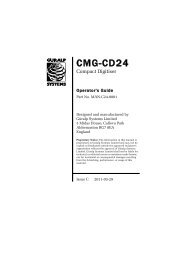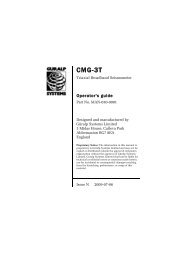CMG-40T-1 - Güralp Systems Ltd
CMG-40T-1 - Güralp Systems Ltd
CMG-40T-1 - Güralp Systems Ltd
Create successful ePaper yourself
Turn your PDF publications into a flip-book with our unique Google optimized e-Paper software.
<strong>CMG</strong>-<strong>40T</strong>-1<br />
4. Pour a layer of loose, fine sand into the pit to cover the base. The type of<br />
sand used for children's sand-pits is ideal, since the grains are clean, dry<br />
and within a small size range. On top of the sand, place a smooth, flat<br />
granite plinth around 20 cm across, and shift it to compact the sand and<br />
provide a near-level surface.<br />
Placing a granite plinth on a sand layer increases the contact between the<br />
ground and the plinth, and improves the performance of the instrument.<br />
There is also no need to mix concrete or to wait for it to set, as in step 4.<br />
5. Alternatively, if time allows and granite is not available, prepare a<br />
concrete mix with sand and fine grit, and pour it into the hole. Agitate<br />
(“puddle”) it whilst still liquid, to allow it to flow out and form a level<br />
surface, then leave to set. Follow on from step 7.<br />
Puddled concrete produces a fine-textured, level floor for emplacing the<br />
seismometer. However, once set hard, the concrete does not have the<br />
best possible coupling to the subsoil or bedrock, which has some leeway<br />
to shift or settle beneath it.<br />
6. Alternatively, for the most rapid installation, place loose soil over the<br />
bottom of the pit, and compact it with a flat stone. Place the seismometer<br />
on top of this stone. This method emulates that in step 3, but can be<br />
performed on-site with no additional equipment.<br />
7. Set up the instrument as described in Section 3.1, “Installing in vaults”<br />
(steps 4 to 9).<br />
8. The instrument must now be shielded from air currents and temperature<br />
fluctuations. This is best done by covering it with a thermal shield.<br />
An open-sided box of 5 cm expanded polystyrene slabs is recommended.<br />
If using a seismic plinth on sand (from steps 3–4 or 5), ensure that the<br />
box is firmly placed in the sand, without touching the plinth at any point.<br />
18 Issue A




